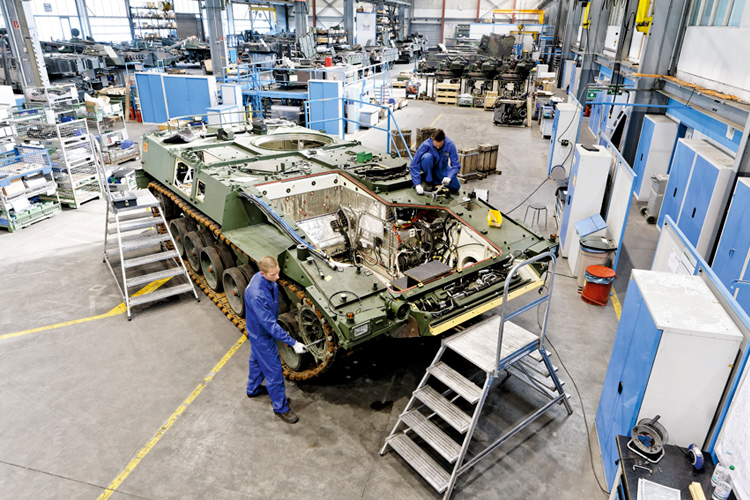Moscow-based think tank Center for Analysis of Strategies and Technologies (CAST) has released an 80-page long analytical study with an assessment of military production volumes in Western countries, including critical weapons and equipment. The CAST report is contextualized within the ongoing war against Ukraine, as many Western states provide active support supplying the Ukrainian Defense Forces.
This perspective is valuable as an insight into how russians view the current state of affairs in the Western defense industry, its victories and failures over the past few years, and how they reflect comparing all that to their own domestic military sector — important factors influencing Kremlin's decision-making and long-term strategic goals.
Read more: How $180 Billion in Arms Purchases Affect Europe's Defense Capabilities

For starters, CAST experts believe that the main objective for the Western defense industry right now is to increase the tempo and volume of production. The reason is that the realities of warfare in Ukraine clearly showed that "quality cannot fully replace quantity."
The analysts elaborate that Europe's production capacity is limited by the lack of raw materials, personnel, high energy prices, and dependence on long-term contracts from the governments. These limitations remain relevant even in spite of the recent large-scale investments in the modernization and expansion of industrial facilities.
And this, in turn, leads to a situation where, in order to meet their needs in armaments, European countries are forced to buy air defense weapons from foreign manufacturers, in particular from the USA and South Korea.
The trend resulted in the United States' role in the global arms market inflating from 34% to 42% over the past several years, they state citing estimates by Stockholm International Peace Research Institute (SIPRI). In the meantime, the efforts of European defense companies have also borne fruit: for example, the total ammo production capacity has doubled up to 1.2 million shells a year, however, it's still not enough to fully meet the demand from the Ukrainian forces.

However, Defense Express notes, if we fast-forward to the conclusions section, we'd see the CAST authors contradict themselves in certain ways. On the one hand, they say that Western defense companies, against the background of russian-Ukrainian war, are trying to create a steady foundation for future improvements in the military-industrial complex — like, in order to produce air defense missiles in sufficient quantities.
On the other hand, they also claim that Western manufacturers are limited in their development opportunities because they seem to struggle to encourage long-term investments for expansion, often finding themselves waiting for a decisive political signal from their respective state governments.
Defense Express also considers necessary to emphasize separately that regardless of how adequate the estimates in the CAST report may be, these focal points quite clearly illustrate the following premise that lies in the core of the Kremlin's war strategy against Ukraine: the russians simply hope that they can win in a protracted arms race against Ukraine and the entire Western world.

Read more: Ukraine Has Matched or Even Surpassed All EU Countries Combined in the Rate of Self-Propelled Artillery Production














